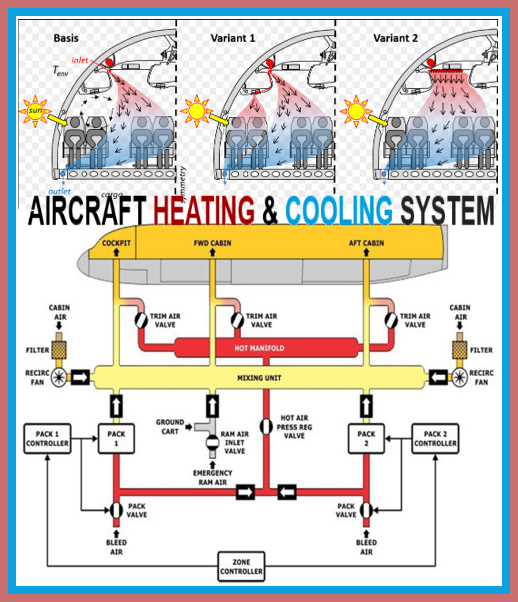Where Does Hot Cabin Air Fall In The FAA’s List of Safety Priorities?

Rep. Brett Guthrie (R-KY-2) appears to have listened to intemperate constituents who vented about aircraft cabin temperatures (puns intended). Based on his senior status within the House Majority (Deputy Whip) he shepherded the Sports Medicine Licensure Clarity Act of 2018, which included in its 3,000 words on aviation safety.
The bill invoked the FAA’s authority to judge “SAFETY” [ rather than the likely constituent word “comfort”] of aircraft cabin temperatures. Good question!!! And the FAA’s Civil Aerospace Medical Institute (CAMI) has existing world class facilitiesavailable to assess temperatures in commercial aircraft.

The statute, instead, directs that the study be conducted by the incredibly competent and technical National Academies of Sciences, Engineering, and Medicine1 . The good news is that the Academies have studied this general aspect of aircraft when it issued its The Airliner Cabin Environment and the Health of Passengers and Crew (2002).
Congress has the constitutional power to mandate that the FAA meet deadlines on a variety of tasks, and it does frequently as this short list demonstrates:
Technical Training and Human Performance
Unmanned Aircraft Systems
Alternative Jet Fuels and Environment
General Aviation Safety, Accessibility, and Sustainability:
Commercial Space Transportation
Advanced Materials
Airliner Cabin Environment and Intermodal Transportation Research
Aircraft Noise and Aviation Emissions Mitigation:
General Aviation Research
Airworthiness Assurance
Operations Research
Airport Technology
Computational Modeling of Aircraft Structures:
Part 107 (Small Unmanned Aircraft Systems).
Part 117 (Flight and Duty Time
Part 121 (Operating Requirements)
Part 135 (Operating Requirements for Commuter and On-Demand Operations
Part 145 (Maintenance, Preventive Maintenance, Rebuilding, and Alteration
Part 155 (Airworthiness Standards)
Part 160 (Civil Aviation Security):
Part 171 (Registration and Marking):
Part 183 (Certification of Airports):
Part 193 (Air Tour Management)
ALL OF THEM HAVE CONGRESSIONAL DUE DATES.
Add to these external “priorities”, FAA senior management carefully manages all of the demands on the staffers’ time. The order of these assignments reflects what the most knowledgeable executives determine as the AGENCY’S MOST IMMEDIATE SAFETY CHALLENGES. Congress does not indicate where tasks, like Aircraft Cabin Temperature, fit among the above litany of statutory deadlines.(i.e. my bill should go before…?)The Member/Sponsors do, however, write pointed letters to the Administrator demanding action of their favorite project. May the agency order the numbering of the tasks with the MOST SAFETY CRITICAL ASSIGNMENTS first?

==================================================
How hot is too hot on a plane? The FAA wants to know
The agency launched a new study as airlines face scrutiny over cabin temperatures that can reach 90 degrees during boarding

Aircraft cabin temperatures, long a source of PASSENGER COMPLAINTS but largely unregulated, will now be the subject of a federal safety study as part of the Federal Aviation Administration’s latest reauthorization.

The FAA said it has contacted the National Academies of Sciences, Engineering, and Medicine[1] to begin investigating the subject, though it has yet to develop a full plan pending the study’s scope. The one-year study will examine the health and SAFETY EFFECTS of minimum and maximum aircraft cabin temperatures on passengers and crew.

Airline cabin temperatures became a hot topic this summer amid record heat, and states like California expanded workplace safety regulations to protect indoor workers from rising temperatures. In September, a Politico investigation revealed that neither Delta Air Lines (DAL), United Airlines (UAL), nor Southwest Airlines (LUV) had a maximum cabin temperature at the time that would prevent passengers from boarding. American Airlines (AAL) allows cabin temperatures to reach 90 degrees before considering it too hot to board, while JetBlue (JBLU) recently raised its threshold to 85 degrees from 80 degrees.
The study is part of the FAA’s broader oversight of cabin air quality, which currently requires airplane manufacturers to ensure passenger compartments are free from harmful concentrations of smoke, vapor, or toxic fumes. Airlines must maintain ventilation systems that supply about half a pound of fresh air per minute for each passenger – comparable to other public spaces.
The FAA already follows and participates in European Union Aviation Safety Agency research on cabin air quality and helps develop industry standards for addressing the cabin environment through various committees. The FAA will use the study’s findings to evaluate current industry standards for aircraft cabin temperatures and potentially develop new safety guidelines for airlines.

[1] It provides independent, objective advice to inform policy with evidence, spark progress and innovation, and confront challenging issues for the benefit of society. Learn more about our history. As the operating and principal programmatic arm of the National Academies of Sciences, Engineering, and Medicine, the National Research Council has established these guiding principles: A nation and a world that rely on scientific evidence to make decisions that benefit humanity. The National Academies provide independent, trustworthy advice and facilitate solutions to complex challenges by mobilizing expertise, practice, and knowledge in science, engineering, and medicine. Our Core Values Independence, Objectivity, Rigor, Integrity, Inclusivity, Truth